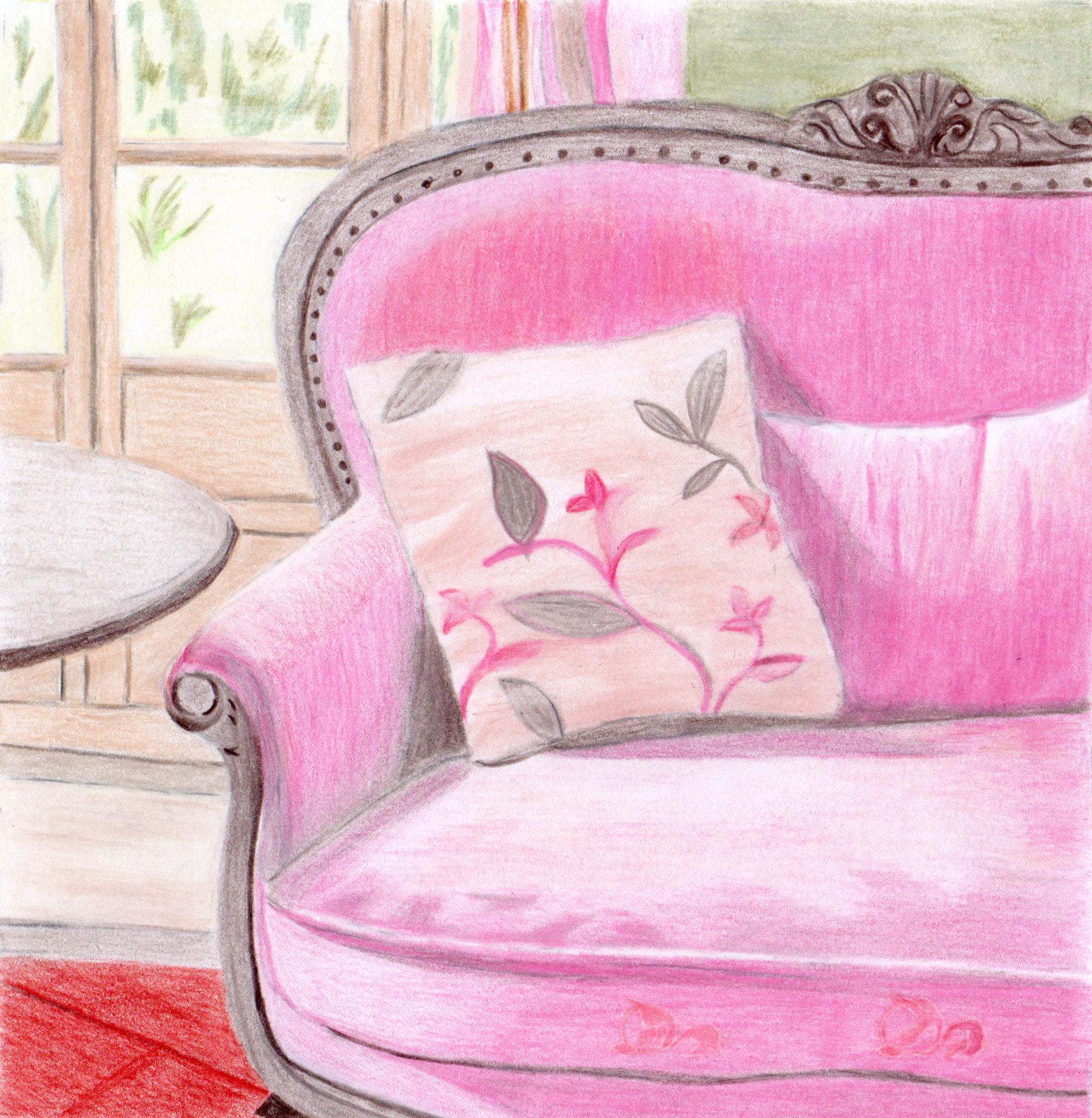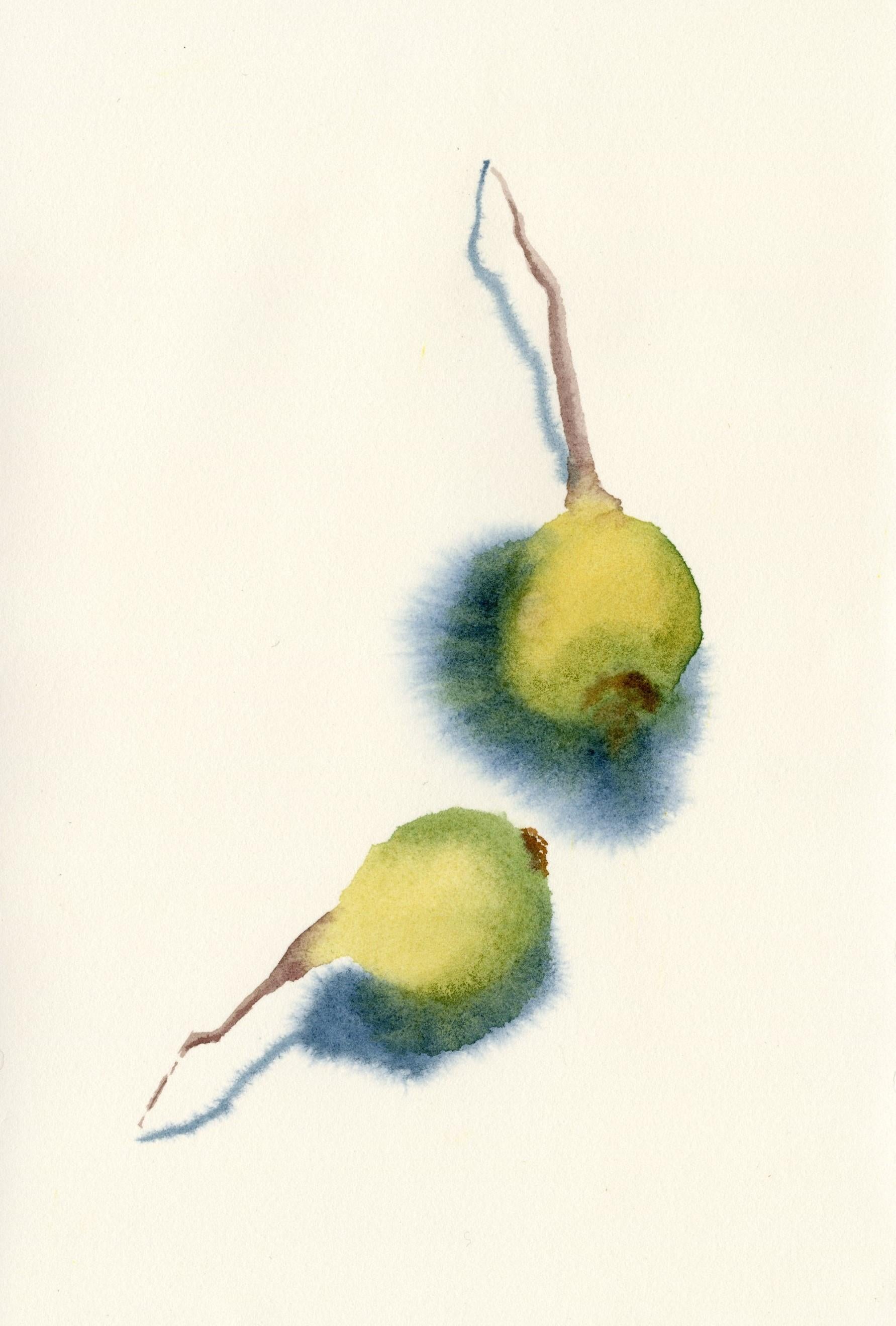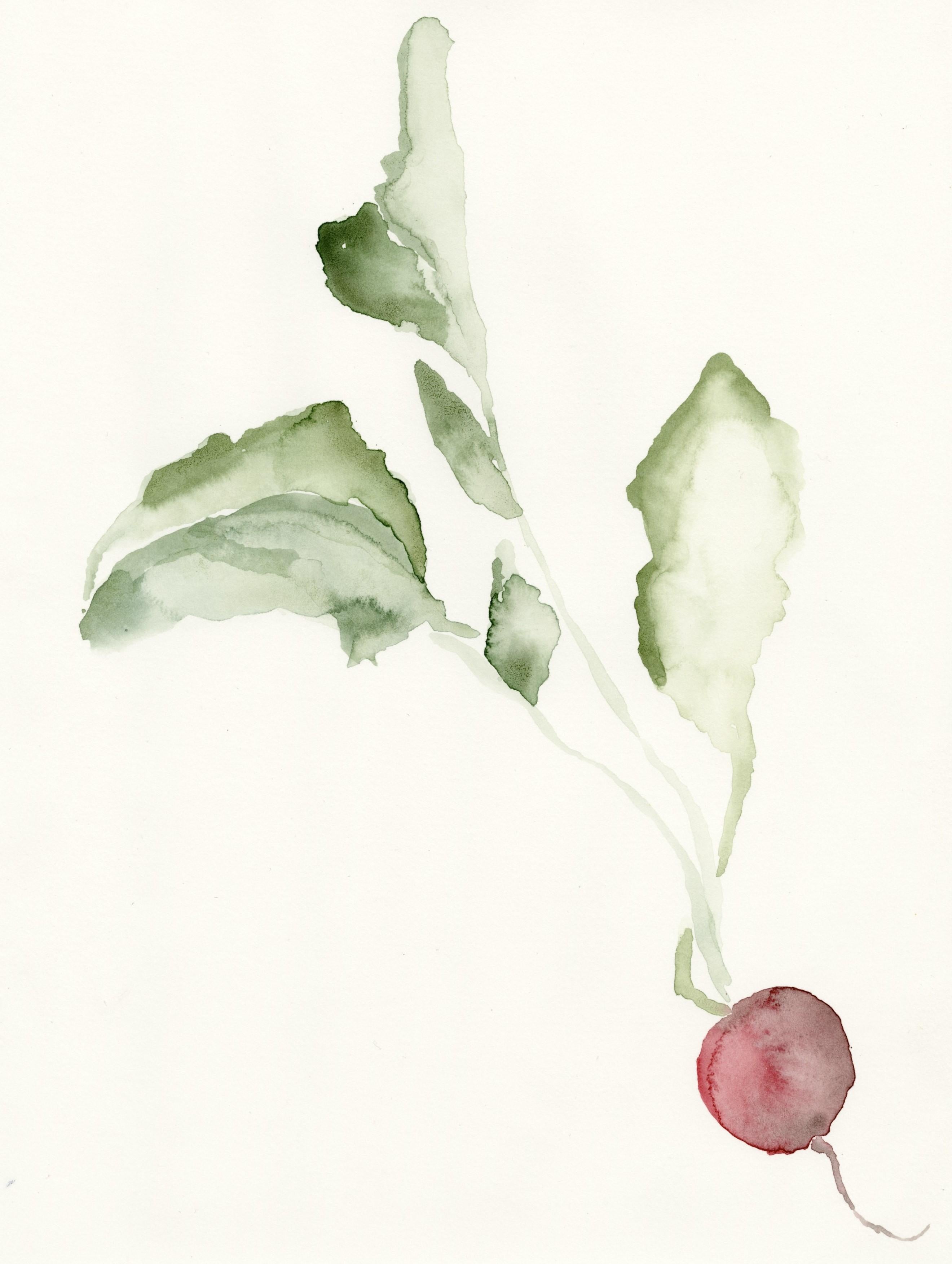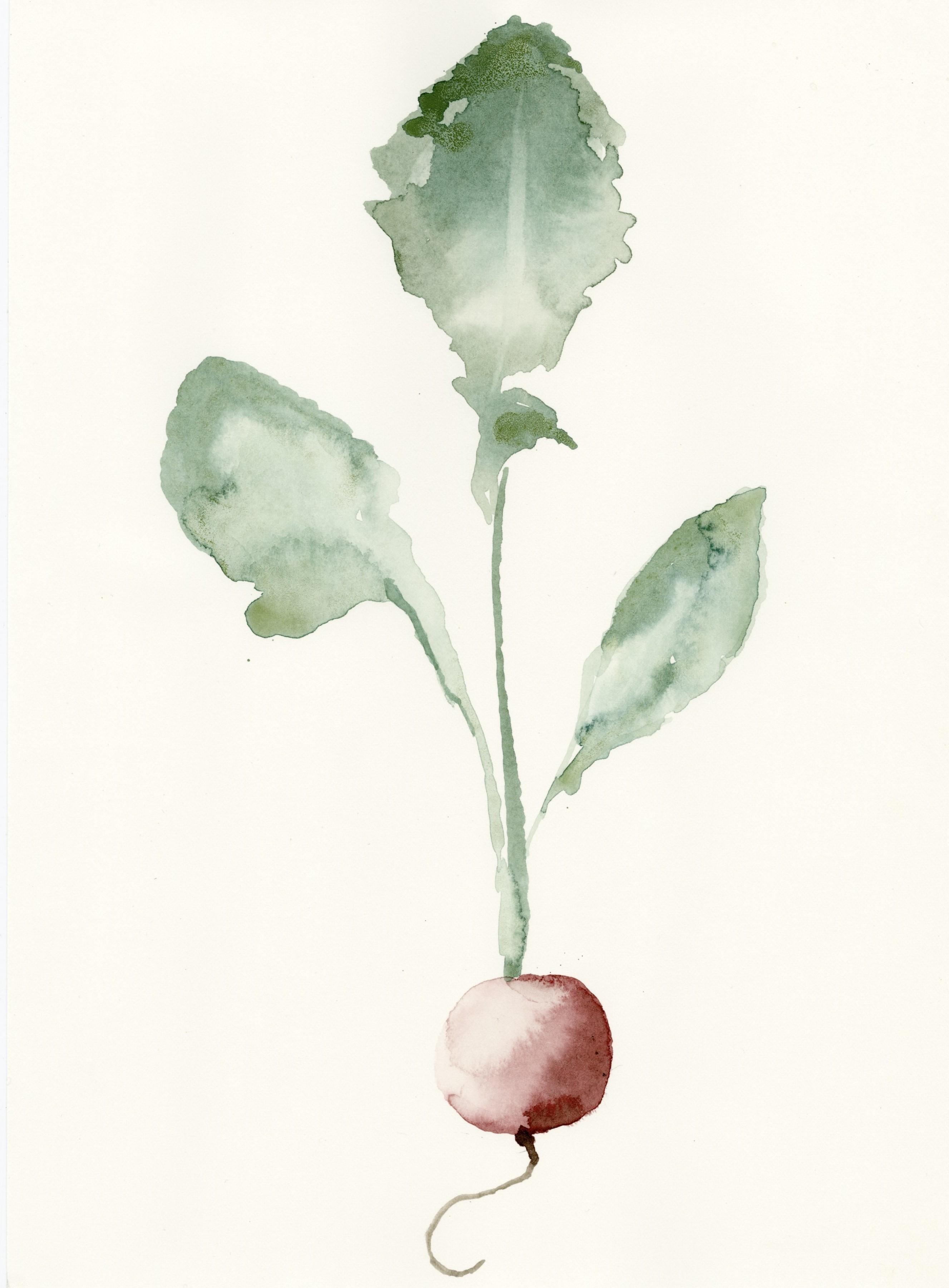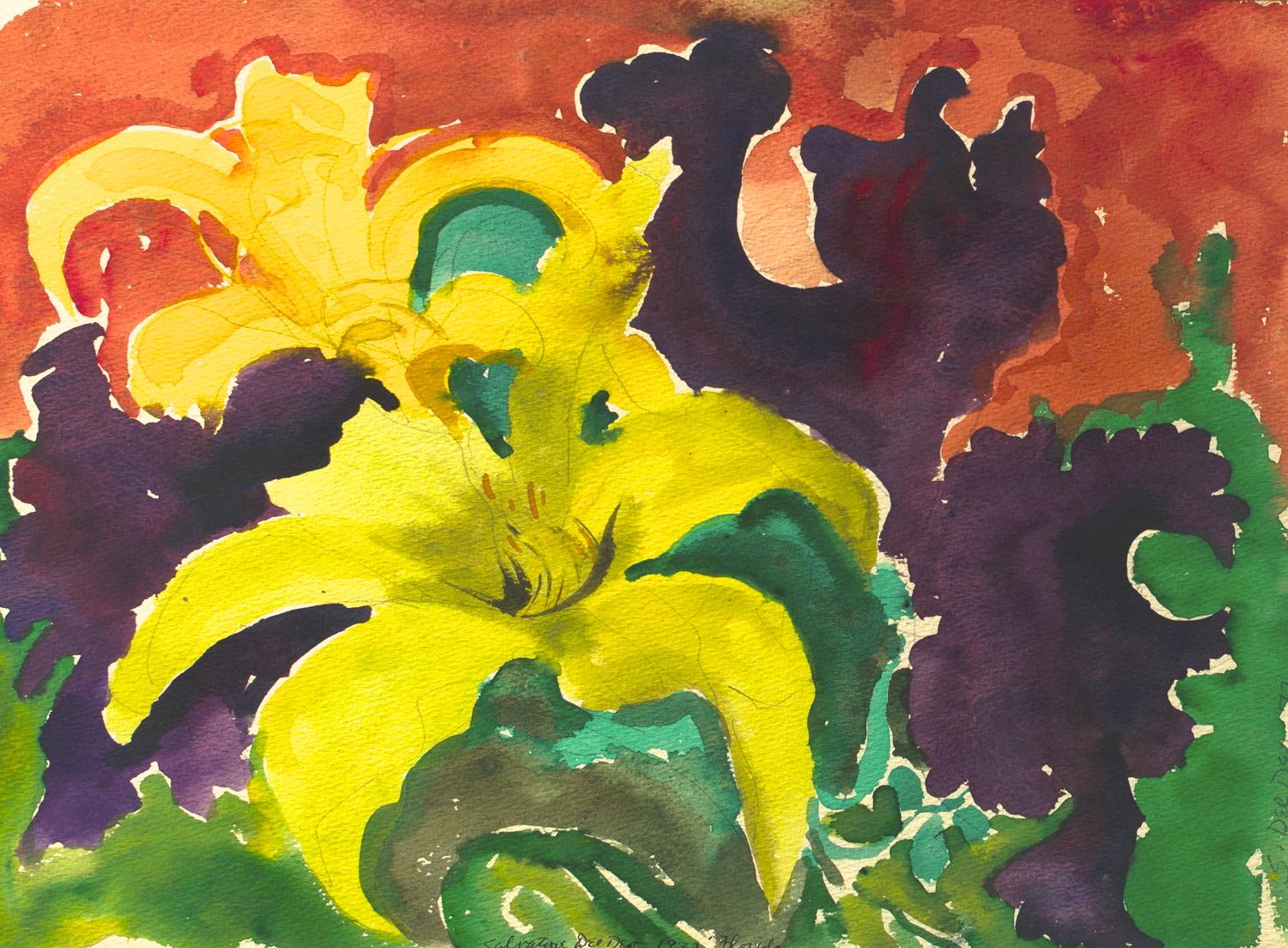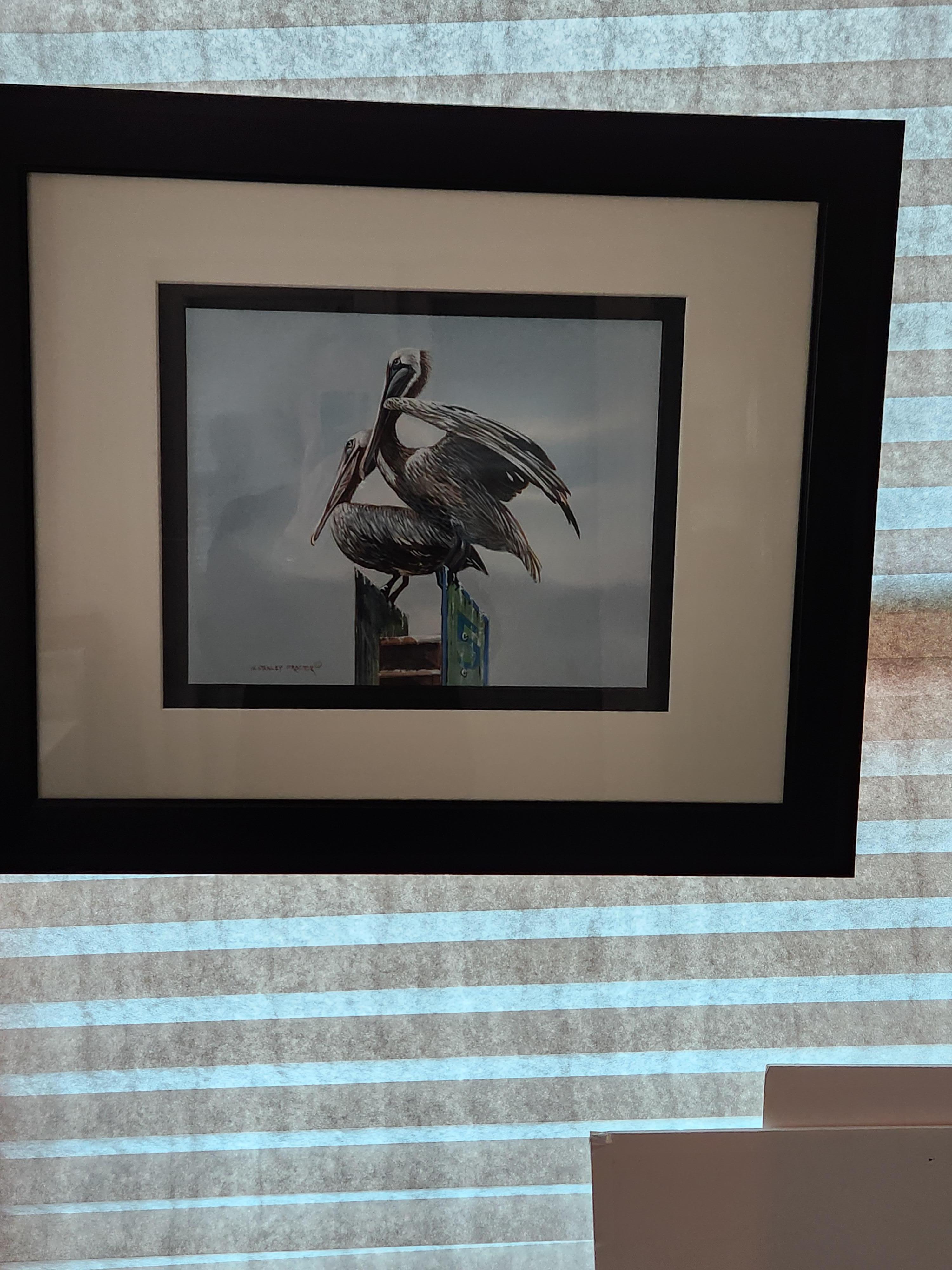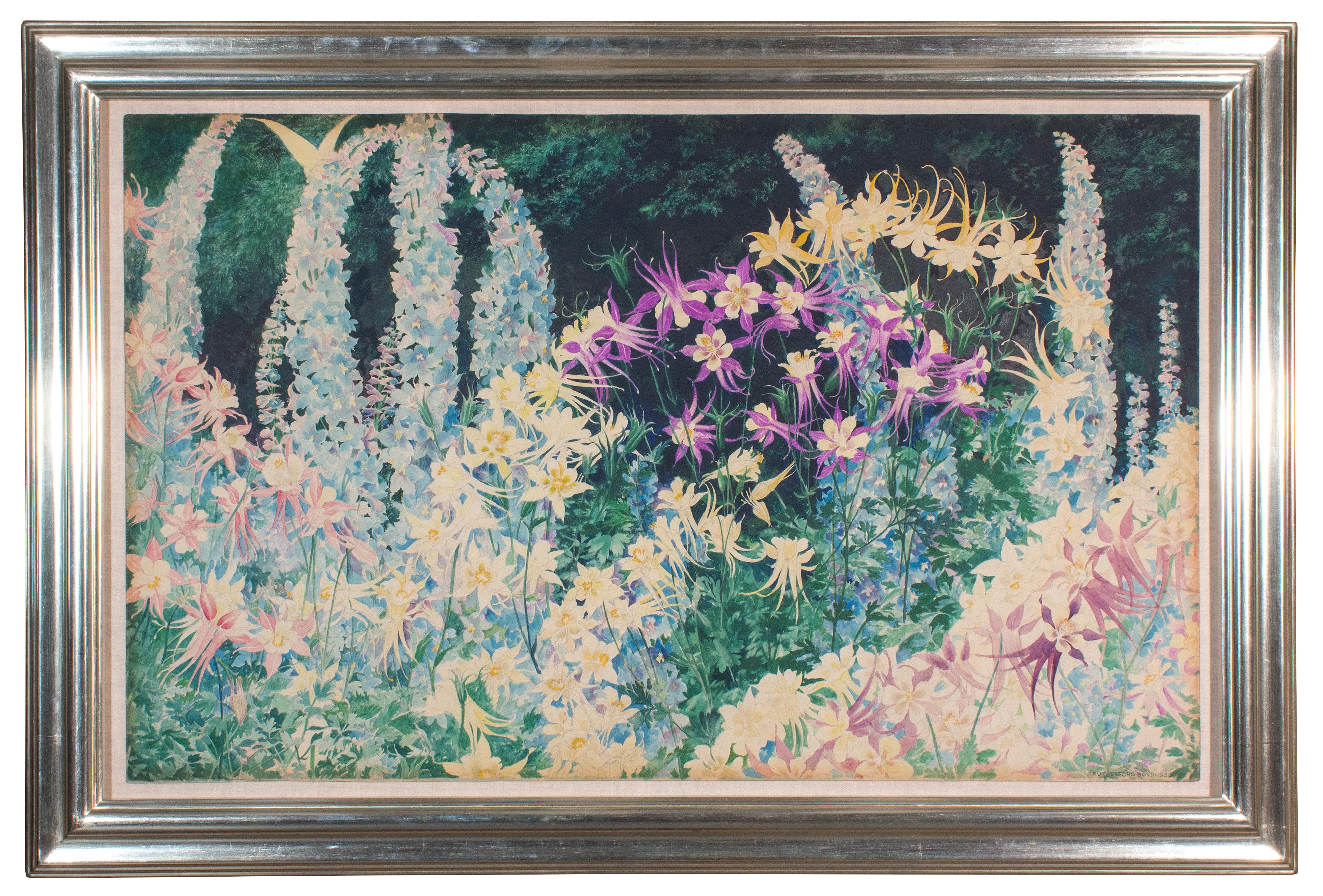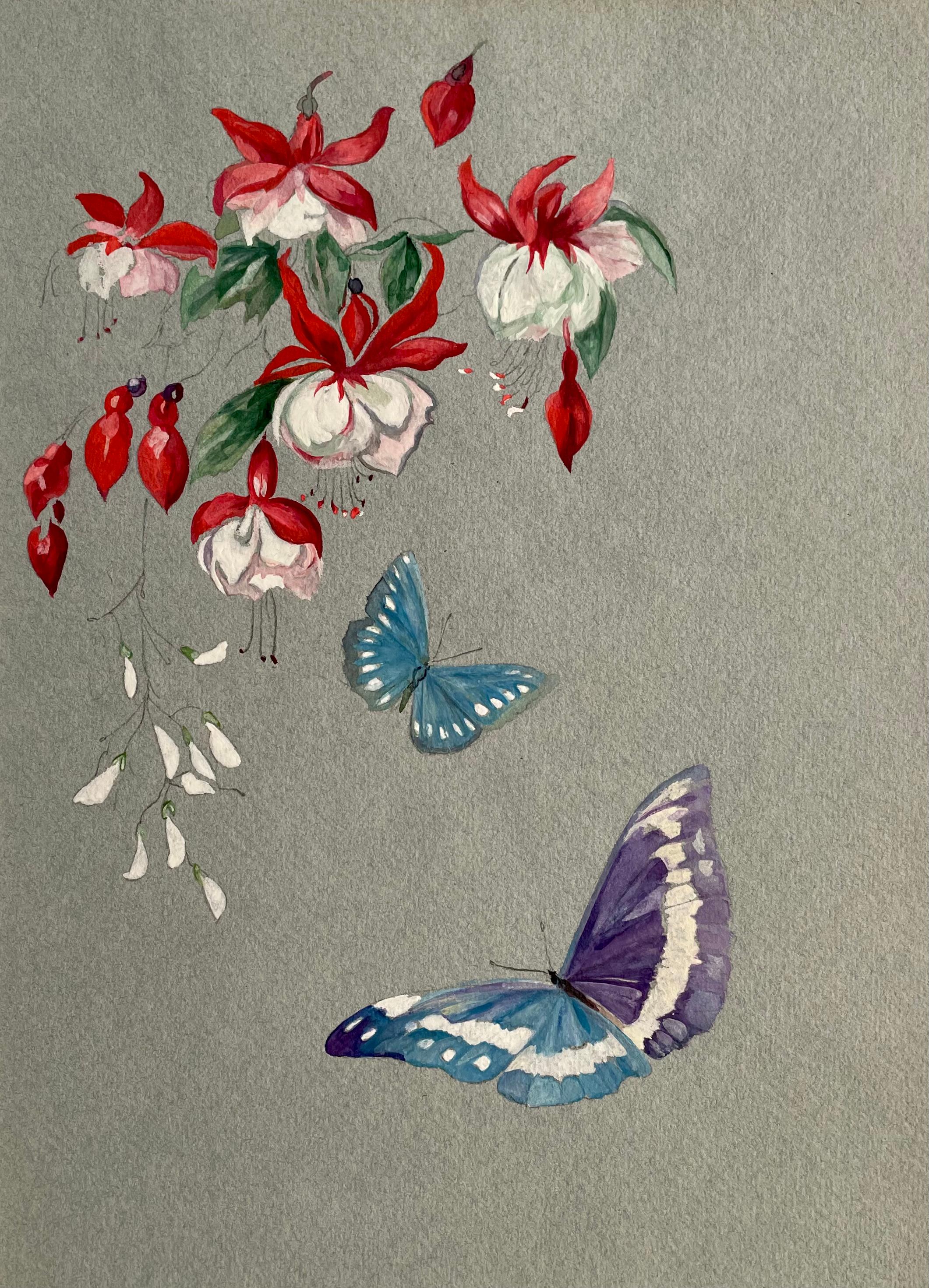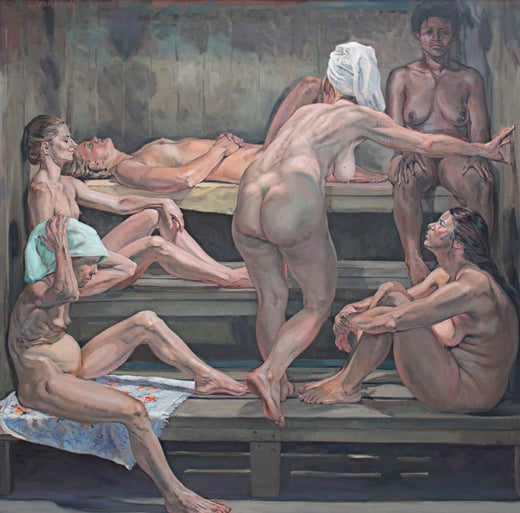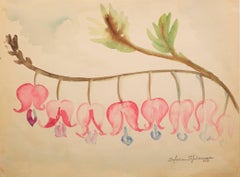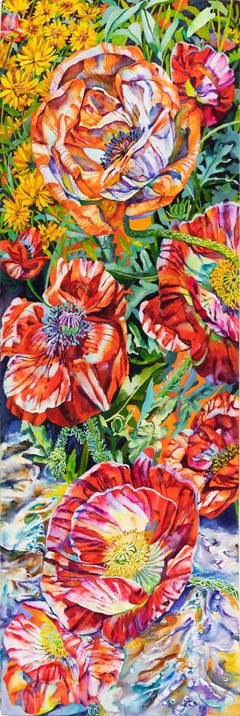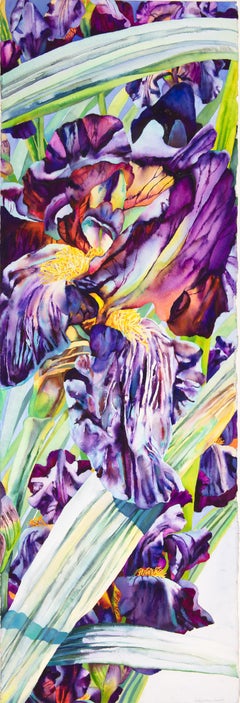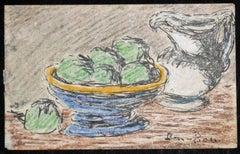
"Vase of Parrot Tulips & Irises, " a Watercolor signed by Alicia Czechowski
View Similar Items
Alicia Czechowski"Vase of Parrot Tulips & Irises, " a Watercolor signed by Alicia Czechowski1974
1974
About the Item
- Creator:Alicia Czechowski (1945, American)
- Creation Year:1974
- Dimensions:Height: 21.5 in (54.61 cm)Width: 23.875 in (60.65 cm)
- Medium:
- Period:
- Condition:
- Gallery Location:Milwaukee, WI
- Reference Number:Seller: 10805g1stDibs: LU60532207113
Alicia Czechowski
Alicia Czechowski, notwithstanding an MFA in art from Wayne State University, is a self-taught artist, as most artists have been. As a child with a natural aptitude for drawing and a lust for sheer visual experience, she began drawing with whatever materials came to hand. Her drawing skills developed during her teens, keeping a sketchbook handy at all times with the result that she did thousands of impromptu studies from life of happenstance subjects that struck a chord, such as people and animals at rest and in motion, random objects, buildings, vistas and extempore imagined imagery.
Growing up in Detroit, Alicia Czechowski had ready access to the superb collection of the Detroit Institute of Arts. At the age of 10, she did her first copy of a painting, a still-life by Claesz, which she rendered on a much reduced scale in colored pencil, and then she did a somewhat more ambitious quarter-scale oil copy of “Trappers on the Missouri” by Bingham. Later, she did full-scale oil copies of paintings, or details of paintings, by Frans Hals, Rubens, Chardin, Gainsborough, Van Dyke, Velasquez, Fantin-Latour, Fragonard and G. D. Tiepolo in the National Gallery and The Metropolitan Museum of Art. Through copying works by these artists, Czechowski's aim was to imbibe something of the virtuosic fluidity and transcendent expressiveness of their handling of the painting medium.
“Being at work with your brushes and colors in front of a living, breathing painting by one of the greats, like Hals or Velasquez, is the most potent learning experience. It is the best way to learn to paint, almost like journeying back in time and actually watching them at work at their easels,” she says.
Alicia Czechowski's work is in private collections throughout the United States, in Mexico, Germany, the U.K. and Japan. She has had solo shows in New York City, Connecticut, Maine and Wisconsin, and has exhibited widely throughout the U.S. She did over 200 freelance illustrations for The New Yorker magazine from 1988 to 1995. Czechowski has taught painting, artistic anatomy, 3-D design and drawing at Wayne State University, Portland School of Art, University of Utah, Heartwood College of Art, and was Professor of Art at the University of Wisconsin-Milwaukee for five years. Her work is in the permanent collections of the Rahr-West Museum, Miller Art Museum and Haggerty Museum of Art.
- "Bleeding Hearts, " Original Botanical Watercolor signed by Sylvia SpicuzzaBy Sylvia SpicuzzaLocated in Milwaukee, WI"Bleeding Hearts" is an original watercolor on paper by Sylvia Spicuzza. The artist stamped her signature on the lower right. This piece depicts a vine of bleeding heart flowers. A...Category
1950s Other Art Style Landscape Drawings and Watercolors
MaterialsWatercolor, Paper
- 'Poppies/Slice' original watercolor signed by Patricia Tobacco ForresterBy Patricia Tobacco ForresterLocated in Milwaukee, WISigned in graphite, lower right. Title and date in graphite on reverse. Deckled edges to paper inherent to artwork; pinholes noted at corners inherent to the artist's process. Artist Bio: Patricia Tobacco Forrester...Category
21st Century and Contemporary Contemporary Still-life Paintings
MaterialsPaper, Watercolor
- 'Zed' original watercolor signed by Patricia Tobacco ForresterBy Patricia Tobacco ForresterLocated in Milwaukee, WISigned in graphite, lower right. Title and date in graphite on reverse. Deckled edges to paper inherent to artwork; pinholes noted at corners inherent to the artist's process. Artist Bio: Patricia Tobacco Forrester...Category
21st Century and Contemporary Contemporary Still-life Paintings
MaterialsPaper, Watercolor
- "Yellow Cadillac, " Hyperrealistic Watercolor Painting signed by Bruce McCombsBy Bruce McCombsLocated in Milwaukee, WI"Yellow Cadillac" is an original watercolor painting by Bruce McCombs. The artist signed the piece lower right. It reatures a shiny yellow car with its doors open sitting on a suburb...Category
1990s Photorealist Still-life Drawings and Watercolors
MaterialsWatercolor
- "English Teddy Bear Company, " Watercolor by Bruce McCombsBy Bruce McCombsLocated in Milwaukee, WI"English Teddy Bear Company" is an original signed watercolor by Bruce McCombs. It depicts the front window display of a toy store. The window allows the viewer to peek inside but al...Category
Early 2000s Photorealist Still-life Drawings and Watercolors
MaterialsWatercolor
- "Giant Hybrid Hibiscus, " Mixed Media Abstract Floral signed by David BarnettBy David BarnettLocated in Milwaukee, WI"Giant Hybrid Hibiscus" is an original mixed-media painting by David Barnett, signed in the lower right corner. The giant flower of the titled is a vibrant pink circle in the center,...Category
Early 2000s Contemporary Still-life Drawings and Watercolors
MaterialsOil Pastel, Watercolor, Giclée
- Garden FlowersBy Charles DemuthLocated in New York, NYCharles Demuth was one of the most complex, talented, and deeply sensitive artists of the American modern period. Whether he was painting floral still lifes, industrial landscapes, or Turkish bathhouses, art was, for Demuth, fraught with personal meaning. A fixture of the vanguard art scene in New York, Demuth navigated the currents of Modernism, producing some of the most exquisite watercolors and original oil paintings in twentieth-century American art. Demuth was born in Lancaster, Pennsylvania, the only child of a well-to-do family. He had an awkward and introverted childhood shaped by a childhood illness, Perthes, a disease of the hip that not only left him permanently lame, but, as part of the “cure,” bedridden for two years in the care of his mother. This long period of incapacitation had a deep impact on Demuth, who came to see himself as an invalid, an outsider who was different from everyone else. It was perhaps during this period of indoor confinement that his keen interest in art developed. Several relatives on his father’s side had been amateur artists, and, following his convalescence, his mother encouraged his artistic pursuits by sending him to a local painter for instruction. The majority of his early pictures are of flowers, a subject for which Demuth maintained a lifelong passion. Following high school, Demuth enrolled at the Drexel Institute of Art in Philadelphia, a school renowned for its commercial arts program. He advanced through the program rapidly, and, in 1905, at the encouragement of his instructors, he began taking courses at the Pennsylvania Academy of the Fine Arts. The two leading teachers then at the Academy were William Merritt Chase and Thomas Anshutz. Anshutz, himself a former student of Thomas Eakins, was well liked by his students, and is best known as the teacher of Robert Henri, John Sloan, and several of the other artists of the Ashcan School. Demuth, too, adopted a similar idiom, working in a controlled, realistic manner while at the Academy, where he remained until 1910. In 1907, Demuth made his first trip to Europe, staying in Paris. He spent time on the periphery of the art scene composed of the numerous American artists there, including John Marin and Edward Steichen. He returned to Philadelphia five months later, and immediately resumed courses at the Academy. Despite his introduction to advanced modern styles in Europe, Demuth’s work of this period retains the academic style he practiced before the trip. It wasn’t until he had summered at New Hope, Pennsylvania, in 1908 and 1911, that his style began to evolve. New Hope was a prominent American Impressionist art colony whose members were largely affiliated with the Pennsylvania Academy. Demuth dropped the conservative tone of his style and adopted a freer and more colorful palette. Although he remained based in Philadelphia, Demuth frequently went to New York during this period. Many of the same American artists of the Parisian art scene Demuth had encountered on his earlier European trip now formed the nucleus of New York’s avant-garde, which centered around Alfred Stieglitz’s 291 gallery. It wasn’t long before Demuth began to apply modernist-inspired strategies to his work. He was particularly influenced by the watercolor work of John Marin, also a former student of Anshutz, whose bold use of color in the medium Demuth freely adapted into looser washes of color. In 1912, Demuth again left for Paris, this time studying in the Académie Moderne, Académie Colorossi, and Académie Julian. In Paris Demuth met the American modernist Marsden Hartley. Hartley, a principal figure in the expatriate art circle, acted as a mentor to Demuth, and introduced him to the wide array of modern styles currently practiced in Europe. Hartley also introduced Demuth to many of the members of the Parisian avant-garde, including Gertrude Stein. Demuth was an aspiring writer, and he spent many hours in conversation with Stein. He wrote extensively during this period, and published two works shortly after his return to America. He also developed an interest in illustrating scenes from literary texts. From 1914 to 1919, Demuth produced a series of watercolors of scenes from books such as Emile Zola’s Nana and Henry James’s The Turn of the Screw. Upon his return to America, Demuth settled in New York. In 1914, Demuth had his first one-man show at Charles Daniel’s gallery, which promoted emerging modern American artists, including Man Ray, Rockwell Kent, Yasuo Kuniyoshi, Stuart Davis, and Max Weber. Demuth drew closer to the artistic vanguard in New York, becoming friends with many in the Stieglitz and Daniel circles, including Georgia O’Keeffe, Marcel Duchamp, Carl Van Vechten, and Edward Fiske. New York’s cosmopolitan atmosphere and active nightlife appealed greatly to Demuth. In a sketchy style well suited to watercolor, he painted many vaudeville and circus themes, as well as nightclub, café, and bathhouse scenes. Often with Duchamp, Demuth took part in an urban subculture replete with nightclubs, bars, drugs, and sexual permissiveness, which, for a homosexual artist like himself, allowed room for previously unattainable personal expression. Demuth’s pictures of sailors, bathhouses, and circus performers embody a sensual and sexual undercurrent, expressing the artist’s sense of comfort and belonging in the bohemian subculture of New York. Simultaneously, Demuth deepened his interest in floral pictures, painting these almost exclusively in watercolor. His style evolved from the broad color washes of his earlier pictures to more spare, flattened, and sinuous compositions, inspired by the drawings of Aubrey Beardsley and other artists of the Aesthetic Movement. Demuth’s flower watercolors are moody and atmospheric, sensuous and elegant, introspective and yet full of expressive power. Moreover they are beautiful, and are unequivocally among the finest still lifes in American art. Despite numerous subsequent artistic undertakings that led him in a variety of directions, Demuth never stopped painting flower pictures, ultimately adding fruits and other still-life objects to his repertoire. In 1916, Demuth began to develop a style later known as Precisionism, a form of landscape painting infused with Cubism, in which space is divided into precisely drawn geometric regions of color. Demuth first began to paint the landscape in an appropriated Cubist mode while on a trip with Hartley to Bermuda. In these early landscapes, in which the curvilinear forms of trees intersect the geometrically articulated architectural forms, Demuth explored ideas that shaped the future development of modernism in America. The full realization of Demuth’s explorations came after his return to America in 1917, when he turned his attention to industrial subjects. These works derive from a “machine aesthetic,” espoused by New York artists such as Francis Picabia, Joseph Stella, Albert Gleizes, and Duchamp, by which artists viewed machines as embodying mystical, almost religious significance as symbols of the modern world. Rather than painting the skyscrapers and bridges of New York as did most of his like-minded contemporaries, Demuth returned to his home town of Lancaster, where he painted factories and warehouses in a Precisionist idiom. The titles for these pictures are often contain literary references, which serve as clues for the viewer to aid in the decoding of the artist’s meaning. In 1923, Demuth planned a series of abstract “poster portraits” of his friends and contemporaries in the New York art and literary scene. In these “portraits,” Demuth combined text and symbolic elements to evoke the essential nature of his sitters’ distinguishing characteristics. In this fashion, he painted portraits of such artists as Georgia O’Keeffe, John Marin, and Arthur Dove. His most famous poster portrait, I Saw the Figure 5 in Gold...Category
20th Century American Modern Still-life Drawings and Watercolors
MaterialsPaper, Watercolor
- STILL LIFE WITH BOWL OF FRUIT AND PITCHERBy Ben-Zion WeinmanLocated in Portland, MEBen-Zion. STILL LIFE WITH BOWL OF FRUIT AND PITCHER. Watercolor on paper. Signed within the image, right. 2 3/8 x 3 3/4 inches. In excellent c...Category
Mid-20th Century Still-life Drawings and Watercolors
MaterialsWatercolor
- Mantel ClockLocated in Houston, TXFrench watercolor and pencil of ornate clock, circa 1930. Original artwork on paper displayed on a white mat with a gold border. Archival plastic sleev...Category
1930s Still-life Drawings and Watercolors
MaterialsPencil, Watercolor
- Swim, Summer Fresh Painting on Paper, Word Art Pastel Tones Typography in PurpleBy Ryan RivadeneyraLocated in Barcelona, ES"Swim is a hand-painted acrylic painting on high-quality 300g paper by artist Ryan Rivadeneyra. The hand-drawn render is reminiscent and inspired by the word art that Ed Ruscha produ...Category
2010s Pop Art Still-life Drawings and Watercolors
MaterialsInk, Archival Ink, Sumi Ink, Watercolor, Archival Paper, Acrylic
- Watercolor on Paper Painting, by Charles Burchfield, 1919Located in New York, NYCharles Burchfield 1893-1967 Trilliums and Rock Ledge, 1919 Gouache and watercolor on paper Provenance: The artist until at least 1963 Private collection, New York Private Collectio...Category
1910s Landscape Drawings and Watercolors
MaterialsWatercolor, Gouache
- Grand Bouquet Et Fruits Devant La Fenêtre À Paris By Marc ChagallBy Marc ChagallLocated in New Orleans, LAMarc Chagall 1887-1985 Russian Grand bouquet et fruits devant la fenêtre à Paris (Large bouquet and fruits in front of the window in Paris) Stamped with signature “Marc Chagall" (...Category
20th Century Post-Impressionist Still-life Drawings and Watercolors
MaterialsPaper, Pastel, Gouache
